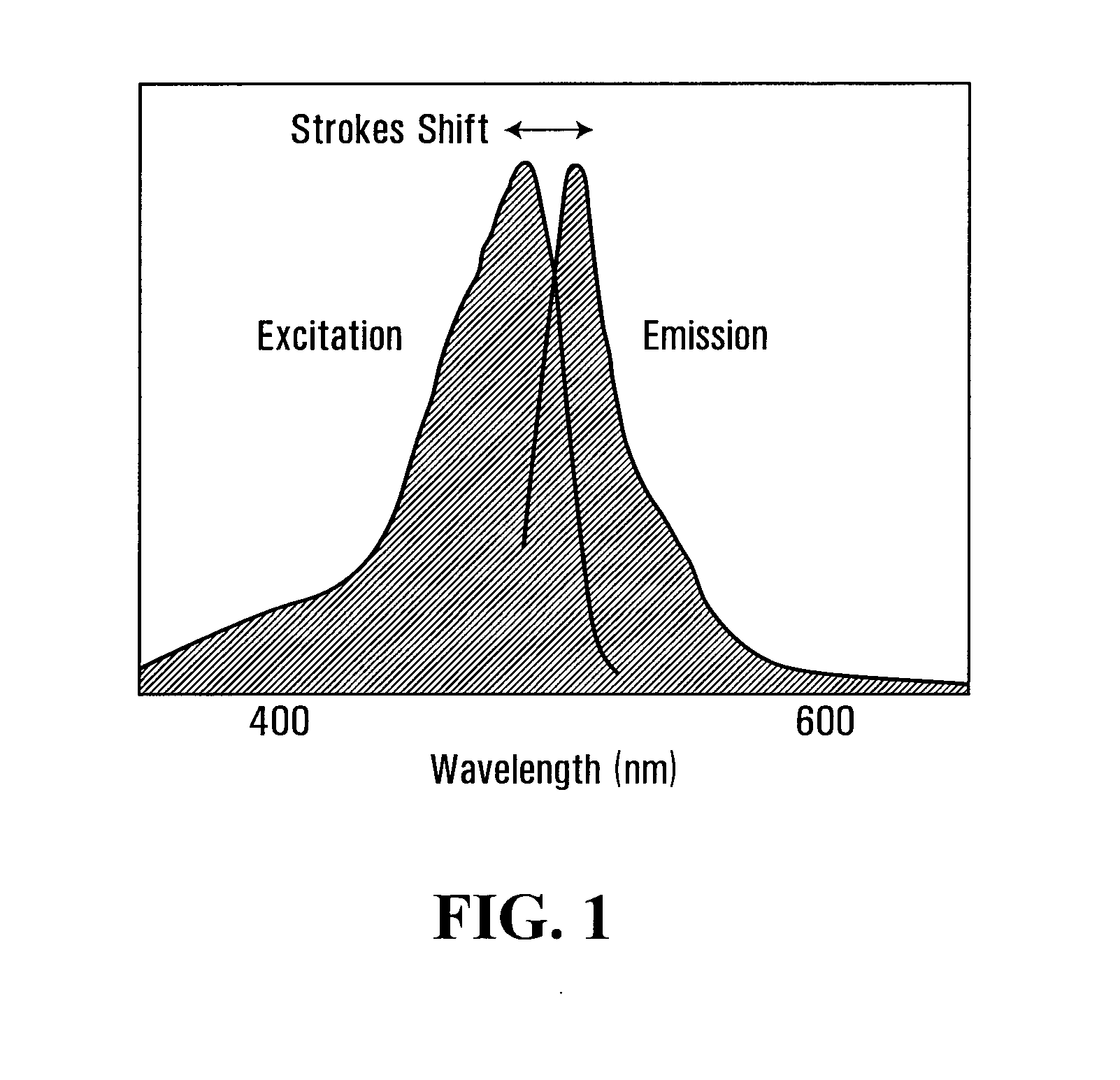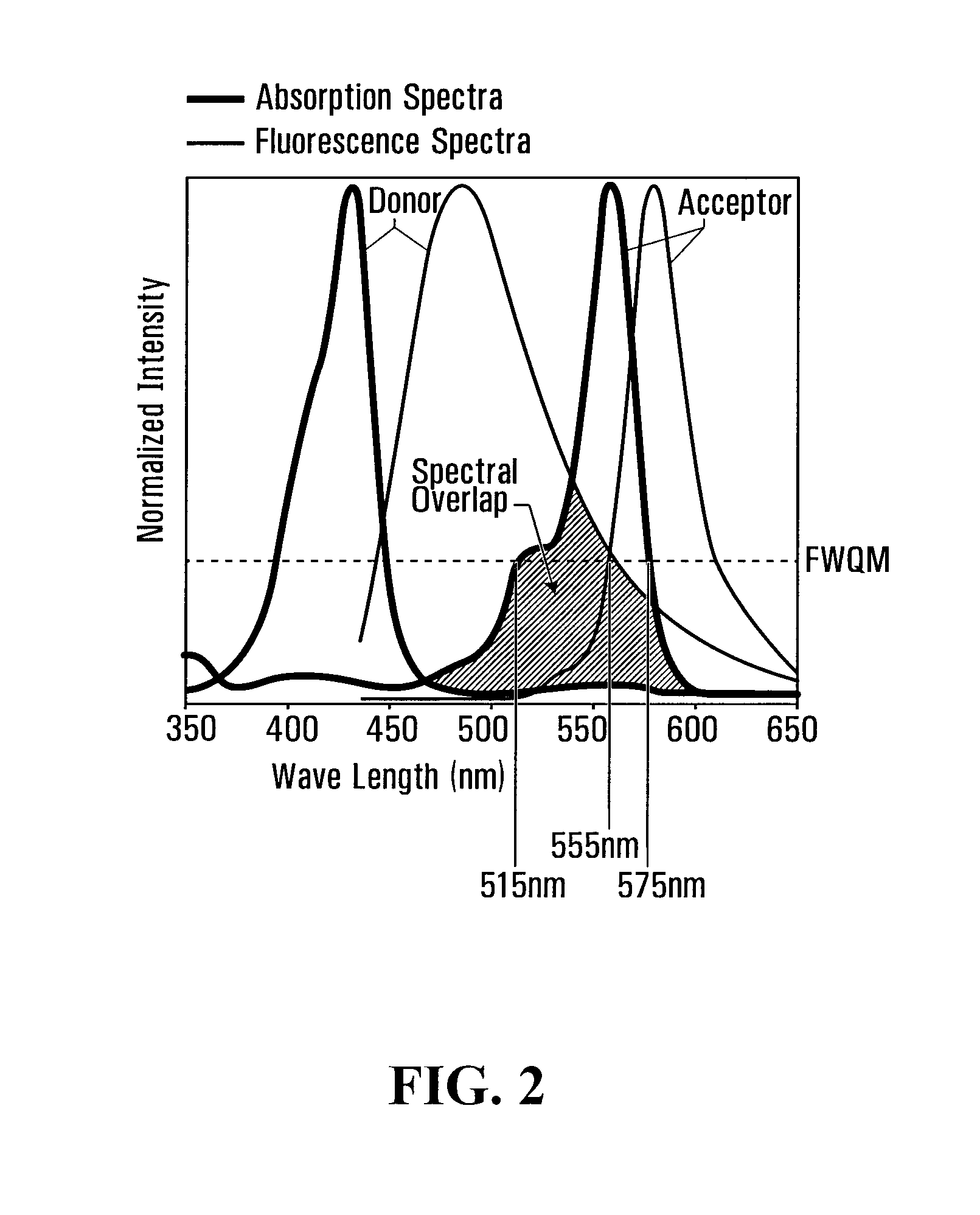Biophotonic compositions comprising a chromophore and a gelling agent for treating wounds
a biophotonic composition and gelling agent technology, applied in the field of biophotonic compositions, can solve the problems of non-healing wounds, methods that do not have an effect on wounds, and non-healing wounds to become ‘unstuck’ and continue to heal, so as to accelerate the rate of wound healing, promote the disruption of biofilm, and promote scar tissue reduction
- Summary
- Abstract
- Description
- Claims
- Application Information
AI Technical Summary
Benefits of technology
Problems solved by technology
Method used
Image
Examples
example 1
[0272]The photodynamic properties of (i) Fluorescein sodium salt at about 0.09 mg / mL, (ii) Eosin Y at about 0.305 mg / mL, and (iii) a mixture of Fluorescein sodium salt at about 0.09 mg / mL and Eosin Y at about 0.305 mg / mL in a gel according to an embodiment of the present disclosure (comprising about 12% carbamide peroxide), were evaluated. A flexstation 384 II spectrometer was used with the following parameters: mode fluorescence, excitation 460 nm, emission spectra 465-750 nm. The absorption and emission spectra are shown in FIGS. 5A and 5B which indicate an energy transfer between the chromophores in the combination.
example 2
[0273]The photodynamic properties of (i) Fluorescein sodium salt at 0.18 mg / mL final concentration, (ii) Eosin Y at about 0.305 mg / mL, and (iii) a mixture of Fluorescein sodium salt at about 0.18 mg / mL and Eosin Y at about 0.305 mg / mL in an aqueous solution were evaluated. A flexstation 384 II spectrometer was used with the following parameters: mode fluorescence, excitation 460 nm, emission spectra 465-750 nm. The absorption and emission spectra are shown in FIGS. 6A and 6B which indicate an energy transfer between the chromophores in the combination.
example 3
[0274]The photodynamic properties of (i) Rose Bengal at about 0.085 mg / mL, (ii) Fluorescein sodium salt at about 0.44 mg / mL final concentration, (iii) Eosin Y at about 0.305 mg / mL, and (iv) a mixture of (i), (ii) and (iii) in a gel comprising about 12% carbamide peroxide (Set A), according to an embodiment of the invention, were evaluated. A flexstation 384 II spectrometer was used with the following parameters: mode fluorescence, excitation 460 nm, emission spectra 465-750 nm. The absorbance and emission spectra are shown in FIGS. 7A and 7B which indicate an energy transfer between the chromophores in the chromophore combination.
PUM
| Property | Measurement | Unit |
|---|---|---|
| pore size | aaaaa | aaaaa |
| thickness | aaaaa | aaaaa |
| diameter | aaaaa | aaaaa |
Abstract
Description
Claims
Application Information
 Login to View More
Login to View More - R&D
- Intellectual Property
- Life Sciences
- Materials
- Tech Scout
- Unparalleled Data Quality
- Higher Quality Content
- 60% Fewer Hallucinations
Browse by: Latest US Patents, China's latest patents, Technical Efficacy Thesaurus, Application Domain, Technology Topic, Popular Technical Reports.
© 2025 PatSnap. All rights reserved.Legal|Privacy policy|Modern Slavery Act Transparency Statement|Sitemap|About US| Contact US: help@patsnap.com



